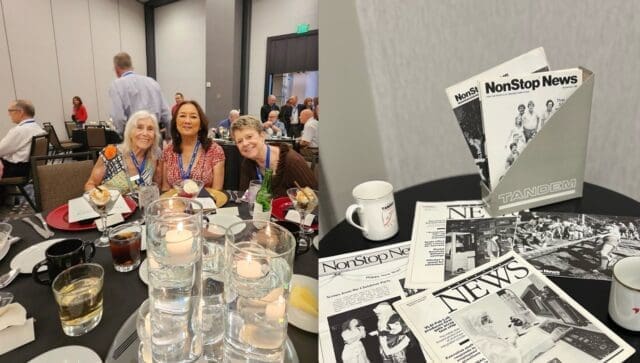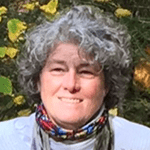
However, not unsurprising, the highlight of the evening was the remarks from the founding CEO, Jimmy Treybig. As he had done in countless ‘stem-winding’, motivational speeches over the decades, Jimmy shared his notions as to what after all these years mattered the most to him. To no one’s surprise, those thoughts were just as invigorating and compelling now as they were 50 years ago, when he first started spreading the word about the importance of a ‘people culture’. As we all know, many great companies have come and gone to Silicon Valley, so I thought it might be worthwhile to share some of Jimmy’s most memorable comments once again.
No. 1: Build Fine Products that Satisfy the Needs of Customers and Partners That They Will Rave About

Tandem was lucky in this regard as the customer need was stark in the mid-1970s. Few remember that in those days, one of the most confounding problems in the computer industry was How to get them to not stop! As we all know, with roots in Hewlett Packard and funding from Kleiner Perkins’s first investment fund, 20 of Silicon Valley’s best and brightest hardware and software engineers went to work and devised one of the finest technology solutions of the times. Within a heartbeat of the first Tandem NonStop Computer System coming to market, customers in financial services, manufacturing, and telecommunications industries (to name a few) couldn’t get enough of them, and of course, the rest was history, The company soon went public and in just 13 years grew to $1B in revenue. However, customer satisfaction has always been at the heart of the culture. As one colleague said, My experience at Tandem taught me how to be a team player and have the customer’s interests at heart—while still bringing in revenue. We always went that extra mile for customers, and we were rewarded with being number one in customer satisfaction for many years. I was proud of that designation.”
No. 2: Create a Comprehensive Business Plan that is Shared with Everybody

Also of importance to Jimmy was the belief that every single person, from janitor to executive assistant, needed to understand the essence of the business and its vision. By that, Jimmy meant the holistic understanding of not just the specifics of the company’s entire operating plan and strategies but also the hows and whys of what would ensure success. This common understanding of what today would be called the company’s ‘PURPOSE’ was what provided clear direction to team and individual work efforts. It resulted in most employees being ‘self-managing’ most of the time, leaving team leaders to focus on providing environments that encouraged problem-solving, creativity, and innovation. I remember interviewing one executive for my book who told of having to present the First Five-Year Plan of a different member of the executive team. This was Jimmy’s idea of a great way to eliminate organization silos – an approach unheard of at the time. There was also one planning cycle where he insisted on proving that the entire plan could be written on one single poster-sized piece of paper that showed all of the needed cross-functional relationships. I still have a copy that hangs on my office wall.
No. 3: Commit to a People-Oriented Culture and Philosophy

No 4: Orchestrate a Structured and Unstructured Communications Engine with Campaigns that Foster Cross-Organizational Connections

As I’ve mentioned many times before, Jimmy’s viewpoint was that structured and unstructured communications were the glue that held the organization together and fostered positive cross-functional connections and employee action. On the structured communications side, Tandem was a key innovator in the number and type of written vehicles, including brochures, magazines, newsletters, executive updates, and the like. They were also the first in Silicon Valley to introduce email to everyone, not just senior leaders, which caused more than a few hiccups in the early days because it threw an organization’s hierarchy on its head. The company was the first to build an internal network so that local files were accessible no matter what office one was in around the world. They were the first to build a TV Network (Tandem’s Television Network) that was used not just for customer conversations and issue resolution but also for product announcements and employee communications. The most famous TV program was called First Friday, a ‘Saturday Night Live ’-like monthly update that included active executive participation in comedy sketches and the spoofing of themes from other then popular TV shows, companies, products, locations, and situations.
Opportunities for unstructured communications, such as the Friday Beer Busts, were also fundamental to the company’s success because they weren’t really about the beer — they were about communication and collaboration. They were about the opportunity to meet with executives and managers in an informal environment and learn about differences in cultural and organizational business practices. Problems were solved, and new ideas were brainstormed. Folks at all levels in the company and across all of the different departments had a chance to meet, greet, mingle, and get to know each other better. It was also a great way to spread the word on any topic or issue of interest to the collective. It’s hard to explain how incredible it was to know that on any Friday afternoon, anywhere in the world, if you went to the local Tandem office, you’d find a welcoming group of people with whom you could share a glass of wine or a mug of beer. Of course, sometimes things got a little carried away, and most employees at one point or another heard of something funny that happened at or as a result of a Beer Bust, often but not always, involving beer. At some level, I think it’s sad and a major loss that in today’s corporate environment, Beer Busts or similar events have vanished from the people culture landscape.
No 5: Focus on Hiring Good People and Ensuring Shared Success

Last but not least was the core belief, which Jimmy reminded all of us at the Reunion, that hiring good people was just the beginning and that, over time, every employee needed to share in the company’s success. At Tandem, this ran the gamut from employee stock options, which enabled many of us to buy our first houses, to the ‘Thanks a Billion Party’ held in the parking lots behind the Vallco Parkway Buildings in Cupertino that featured Kenny Loggins, The Charlie Daniels Band, Chuck Berry and a local band called the Cool Jerks. The six weeks of paid sabbatical every four years was a major source of employee engagement rejuvenation. The employee recognition programs such as the President’s Club, the First Cabin Club, the Intercontinental Division’s Reach for the Peak Program, and, of course, the TOPS (Tandem Outstanding Performers) trips were unique in the industry. Every quarter, outstanding non-sales performers across the company were nominated and, along with their spouse, spouse equivalent, or significant others, came together for a 3-day retreat somewhere in the world. With selected company managers, small teams would brainstorm strategies and tactics, listen to outside ‘Thought Leader’ speakers in the mornings, and socialize and play in the afternoons. TOPS, though an important part of the company’s Rewards and Recognition effort, wasn’t the only program.
Lots of smaller-scale ‘Thanks For Your Efforts’ events happen all the time around the world. In Europe, boat trips were often a reward for extraordinary work efforts and special customer recognition events. One involved cruising down the Thames River from Maidenhead with ‘Old Time Music Hall’ entertainment. Another was an international banking seminar that featured a dinner cruise down the Seine in Paris in a glass-topped boat. But even better was a sailing trip along the English Channel on a nice summer day in the Barclays Bank sailboat. Other types of celebrations were team-specific. As one corporate marketing employee recalled: “My first year with the group saw us having tricycle races on the old basketball court, passing oranges with our necks as we held our own little celebration party!
Tandem Computers was an incredible employee engagement experiment and impacted all of us profoundly. I can still hear the echo of the many rounds of applause at the reunion as people were reminded, once again, through Jimmy’s words, of what really matters in corporate life. It’s also still somewhat shocking, and brings a tear to my eyes, that so many of us still feel, as I do, that their time working at Tandem was the ‘best of their careers, for them and their families, from every perspective possible.’ There is no question, even today, that engaged employees make all the difference for a company’s real success.


Be the first to comment